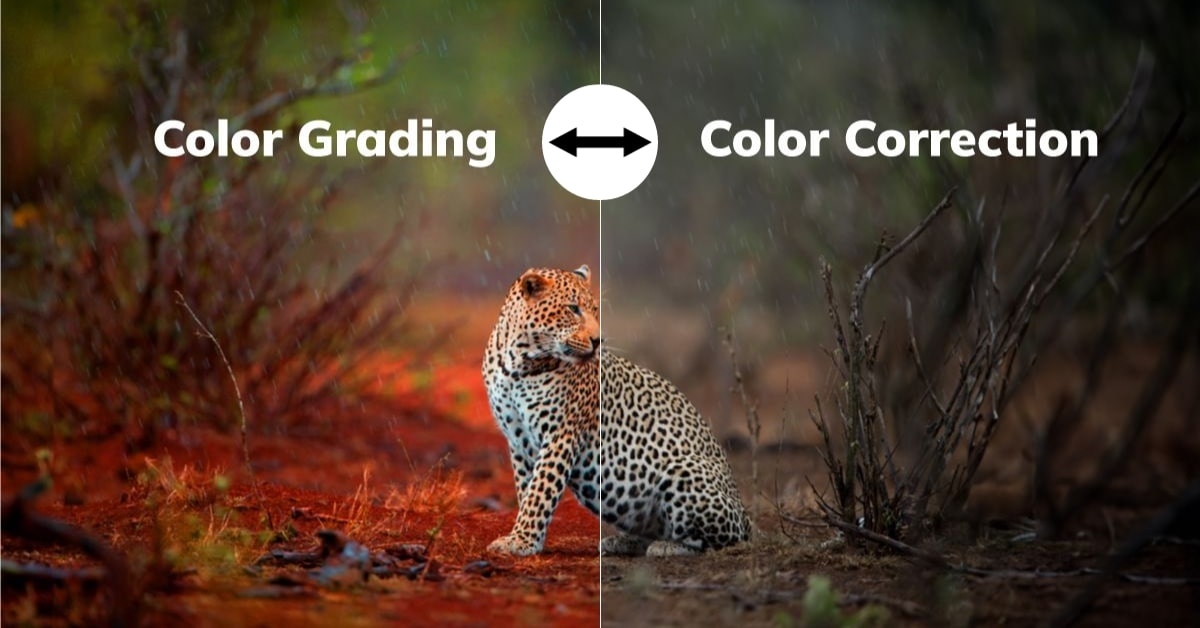In the world of visual storytelling, color plays a pivotal role in conveying emotions, setting the mood, and telling a compelling narrative. Two essential processes in achieving vibrant and impactful visuals are color correction and color grading. In this comprehensive guide, we’ll delve into the intricacies of “color correction and color grading,” exploring their definitions, differences, and the crucial roles they play in the creation of stunning images and videos.
Understanding Color Correction
Color correction is the initial step in the photo editing process, focusing on adjusting the colors in an image or video to achieve a natural and accurate representation. The primary goal is to fix any color imbalances, correct exposure issues, and ensure that the colors are true to life. Color correction aims to create a neutral starting point for further creative enhancements.
Key Aspects of Color Correction
- White Balance: Adjusts the color temperature to neutralize any unwanted color casts, ensuring that whites appear truly white in the image.
- Exposure Correction: Balances the brightness and contrast of the image, bringing out details in shadows and highlights for a well-exposed result.
- Saturation and Vibrance: Fine-tunes the intensity of colors, ensuring they are vibrant without being overly saturated.
- Color Balance: Adjust the balance between the primary colors (red, green, and blue) to achieve a natural and pleasing color harmony.
Color Grading: Elevating the Visual Narrative
Color grading comes after color correction and is a more creative process that enhances the visual style and mood of the content. It involves manipulating colors to achieve a specific look, tone, or atmosphere, contributing to the overall artistic vision of the project. Color grading can be subtle or dramatic, depending on the desired effect.
Key Aspects of Color Grading
- Creating a Look: Establishes a distinct visual style for the project, whether it’s a warm and cozy feel or a cool and cinematic ambiance.
- Selective Color Adjustments: Targets specific colors to create emphasis or de-emphasize certain elements within the frame.
- Adding Filmic Effects: Introduces effects like film grain, vignettes, or lens flares to enhance the cinematic quality of the footage.
- Consistency Across Scenes: Ensures a consistent visual language throughout the project, unifying diverse scenes and creating a cohesive narrative.
Color Correction vs. Color Grading: The Differences:
- Intent: Color correction aims to fix and balance colors for a natural look. Color grading, on the other hand, seeks to infuse a creative and stylized visual identity into the content.
- Timing: Color correction is typically done first in the post-production process, ensuring a clean and accurate starting point. Color grading follows, allowing for creative enhancements based on the corrected footage.
- Scope: Color correction addresses technical issues such as exposure and white balance. Color grading is more subjective, focusing on the artistic interpretation of the visuals.
Conclusion
Color correction and color grading are indispensable tools in the arsenal of visual creators, offering the means to achieve technical precision and unleash creative expression. Understanding the nuances of these processes empowers filmmakers, photographers, and content creators to craft visuals that resonate with their audience, telling stories that are not just seen but felt.
FAQs
Can color correction and color grading be applied to both photos and videos?
Yes, both processes are applicable to both photos and videos, providing opportunities to enhance and stylize visual content across various mediums.
Do I need specialized software for color correction and color grading?
While dedicated software like Adobe Premiere Pro or DaVinci Resolve is commonly used, basic color correction can be done in many photo and video editing applications. Specialized software offers more advanced features for professional projects.
How can color correction and color grading impact storytelling in filmmaking?
Color correction and grading contribute significantly to the emotional tone of a film. They can transport viewers to different worlds, evoke specific emotions, and guide the narrative by emphasizing key elements.
Is there a specific order to follow when applying color correction and color grading?
Yes, it’s generally recommended to start with color correction to achieve a balanced and neutral look. Once the colors are corrected, color grading can be applied to introduce creative elements and enhance the visual style.
This page was last edited on 25 February 2024, at 12:47 pm
